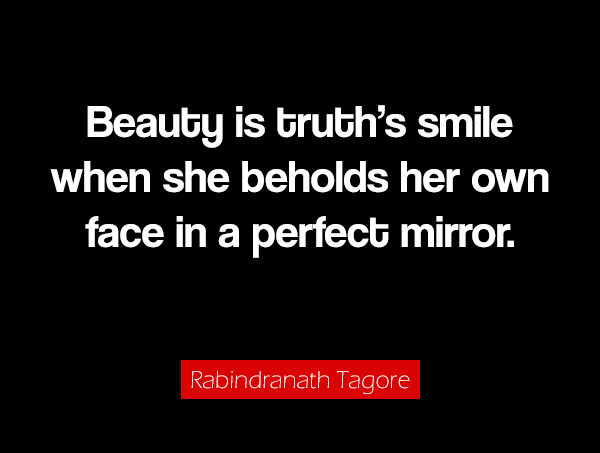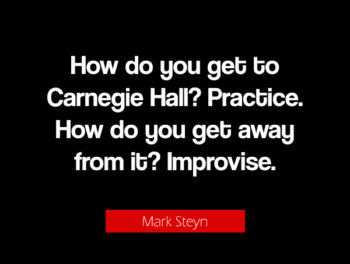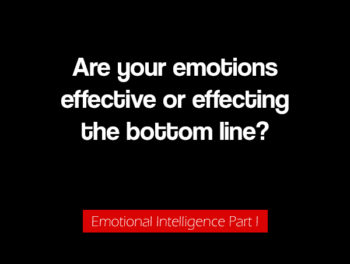
Frank Wilczek is a Scientist, MIT professor, & author of the Book “A Beautiful Question.” He is also published in many articles, authored several books, and is accomplished in his discoveries in physics, not to mention, a Nobel Prize winner. WAIT? What does he have to do with presenting a message to an audience, you might ask? Let’s say the man knows his stuff about matters of science and math, and yet is still fascinated as to how it pertains to art, beauty, and connection within the world. He inspires me because he continues to search for connection in it all! Science and the art of entertainment are incredibly important topics for speakers and presenters to be curious about. It is important for us all to continue to search and research the power of connection with anything we do.
His Book, “A Beautiful Question,” has been called a beautiful long meditation on the single question, “Does the world embody beautiful Ideas?” What is the connection between the internal world and the external world? This is a question he is often on a quest to seek the answer for.
I often say to my clients, “Your audience connects to you the way you connect to yourself.” I also ask, “Does your audience embody beautiful ideas?” Of course they do, especially if YOU are sharing with them provoking their own beautiful ideas. The “Internal world and external world connection” between you and your audience is something that I strongly believe in. In fact, I know it exists because I have personally experienced it many times! Why is this question so important for the trainer, presenter or speaker to get the answer to and understand? Because to be a great communicator we must understand the function of our own biology, not just in presentation or pitch, but also in general communicating terms. When we have a deeper understanding of how to get that connection with the audience, we are able to take them on a powerful journey with us! I believe the task at hand is giving them the gift of a positive, educational, and uplifting experience, with maybe even a call to action at the end. It’s not about just delivering an agenda and or some facts and figures. This thoughtful prepared feat requires not only just speaking presence; it requires mindful listening as well.
Again, I quote Frank Wilczek from an interview when he said, “I’m convinced that art and science activate the same parts of the brain. The brain rewards us for interacting with beautiful things. In this way, evolution wants to encourage us to do what is good for us. This applies to many things of course, but one of them is the understanding of how things are going to behave.” For me, that means applying this comment to the understanding of how your audience is going to behave, the body biology rewarding us with hormones like dopamine for funny or beautiful stories. Whatever gives us dopamine, gets us hooked on dopamine and that includes powerful presentations, how else do you expect to get a following? People do not come to sit in a “Bored Room”.
Is this getting too super deep for you? No, I have not been inhaling any herbal substances currently becoming a legal commodity in many countries. Let’s settle down and get to my basic point. People connect to you the way you connect to yourself. What is the “connection” between the experience of the inner world of consciousness and the external world? This can be a very subjective idea.
Think of it in this simplified way: The reason we are able to laugh, cry, and go on an emotional journey with actors in an awesome movie is not just because of great writing, direction and overall production quality. It is also because good actors are performing truthfully under imaginary circumstances. They are not faking it. They have learned the art of using their emotions and behavior as tools, putting their body and brain through the reality of the emotional imaginary circumstance. We are able to trick our brains of many things and we can most certainly trick it into going through formulated emotions and behaviors. When (bad) actors or “pretenders” do a bad job, we don’t invest. We don’t believe them because they are not really connected to their tools (emotions and behaviors), and they haven’t managed to “trick” their own brains, leaving us, the audience, unconvinced. So in this case no connection is achieved.
What makes the audience invest when they are real and acting truthfully in an imaginary circumstance? Because biologically with things like Mirror Neurons lurking about and firing off without our control we find we connect and understand each other way more than we may intend to. That old thing of I just don’t trust that guy, I don’t know why it is just a gut instinct, is because a primal connection exists between our brain and out gut. So the subject matter today is “Mirror Neurons” and why they could be so incredibly important to the way we should be consciously preparing our communication. Mirror neurons are in many ways the basis of our connection, bonding and understanding of one another according to many different studies and which scientist you are talking to.
MIRROR NEURONS
Vilayanur Ramachandran, a fascinating Neuroscientist known primarily for his work in the fields of behavioral neurology and visual psychophysics, has a great TED talk about mirror neurons.
TED Talk https://youtu.be/l80zgw07W4Y
In his talk he explains the findings of mirror neurons and what how they affect human behavior in 4 areas; Imitation, action, touch, and empathy. He points out that imitation as an act requires the other person’s point of view. He goes so far as to say that we are actually quite literally connected by our neurons. This is the basis of Eastern philosophy in that there is no real independent “Self” aloof from other human beings, and there is no real distinction from your consciousness and someone else’s consciousness. My favorite part in the TED Talk (in his thick Indian accent) is when he says, “This is no mumbo jumbo philosophy. It merges from our basic understanding of neuroscience, and this understanding allows science and the humanities to connect and exist.”
Then you have Dr. Gregory Hickok, PhD Professor of Cognitive Sciences at The Center for Language Science at University of California in Irvine. He is the Author of “The Myth of Mirror Neurons”. He doesn’t necessarily agree with Dr. Ramachandran in regards to the imitation and action part, but doesn’t knock that there is definitely evidence for bonding, empathy and connection. He believes there is evidence that mirror neurons could drive emotional relevance for making decisions. “Mind reading” (a form of interpretation and a whole other blog) is dependent on the ability to imitate or understand the intention of another’s actions and this solves the correspondence problem, and also desire and drives behavior.
So, now we have Frank Wilczek talking about the ideas of connection in science, art and beauty coming together, and Vilayanur Ramachandran with the research using neuroscience to connect science and the humanities together. Even though Dr. Gregory Hickok is not fully convinced of some of the behaviors being linked to mirror neurons, they all are talking about a deep connection that is not on the surface. These are biological functions and reactions that are pre-wired and built into our circuits already. I believe as presenters, speakers, trainers and communicators, we cannot discount any of this! We need to understand the thing we can do is to stay current and apply ourselves with the scientific knowledge to the best of our abilities if we want to be effective & engaging communicators.
Now, not all the neuroscientists agree on exactly what for and why we fire mirror neurons, yet they all agree they exist in some “Mirror”connecting way because the evidence has been recorded time and time again. Mirror neurons take input of a particular action or emotion from one person and generate a copy of it in the observer’s brain. In the next part of this blog, I am going to attempt to explain it a little, talk about the research and how I believe it pertains to connection with an audience, and what skills we can develop as speakers, trainers and presenters to deepen that connection.
THE CHAMELEON EFFECT
The Chameleon Effect is the human ability to unconsciously mimic the facial expressions, emotional reactions, behaviors and even hand gestures of others, and is something that humans do quite regularly. Dane Cook (The American comedian) and his “SUPER FINGER” hand gesture became famous, provoking every man, woman and pet that followed Dane Cook to copy his gesture all over their social media.
Humans are very apt to mimicking the behavior of those we observe, say, for example, in the movies we watch. It’s essentially as if the audiences neurons are adopting the action of the person they are watching. Psychologists believe it is because we see the potential for people to like us better. So it makes complete sense when you are in synch with an audience and their mirror neurons activate, mimicking behaviors happening, particularly if we are observing compelling storytelling with emotions and appropriately placed humor. Even if it is a negative dramatic story or image, mirror neurons play a vital role in how people learn through mimicry and feel empathy for others even in pain. When you wince while seeing someone experience pain — a phenomenon called “neural resonance” — mirror neurons are responsible.
Just for the record, forget yawning and smiling, laughter is one the most contagious behaviors we have. We fire a lot of mirror neurons off in others when we do it, and we mimic it super fast and very effectively with great enjoyment. Regardless of culture or language barriers, laughter is the one behavior we all understand automatically. Laughter is thought to be an important part of social bonding. When we hear other people laugh, in many cases we start laughing with them or feeling the need to laugh with them regardless of even knowing what they might be laughing at.
Though laughter can occur from funny thoughts independent of other individuals, or even out of anxiety or embarrassment, we rarely laugh out loud by ourselves. Although I make sure it is a regular occurrence, for myself and those around me, because of the amazing side effects. That’s another blog in itself. (Heck in fact that is an entire book, not just a blog).
We know through neuroplasticity that our brain is changing all the time, constantly learning new behaviors, habits and practices. In the short term, you can get better quickly and increase the chemical signals between neurons, yet this doesn’t seem to create lasting structural change in our brain necessary to support long term memory and therefor stick. Long term memories, behaviors, habits, and practices take time and what you see in the short term doesn’t always reflect. It is the physical & structural changes in the brain that support long-term learning. So, whatever you spend time learning or practicing the most is what will create growth and structural change in that part or your brain, for example, blind people who learn brail have larger hand sensory areas in their brain. The more you use an area of your brain, the more excitable it becomes and easier it is to use again.
So, if you devoted time, energy, and practice to a developing a deeper skill set, understanding your biology in regards to communication with either an audience, yourself, to storytelling, delivering humor, or overall performance, there would be a growth area and a stronger skill set in those parts of your brain, thus having these skills increase in dominance. The best driver of change in your brain is your own behavior; the amount of practice that is required to learn new or relearn skills is large and needs a conscious devotion. Without conscious effort to the practices of the art, presenting, and speaking there simply will not be growth, ensuring you fall short of a deep engaging connection with your audience.
Best practices for stronger connection include setting aside regular time, physically practicing by using the body motions of storytelling. I like to call it “getting Italian” with your hand gestures and motions, not only verbally but by physically telling the story. Learning the art of reading the behavior of others and ultimately, reading the behavior of your audience is crucial. Taking in the moment, risking the opportunity to see what works and what doesn’t, and remembering it’s not about being perfect, it is about being human. These are the skills we need to develop to take it to the next level. It is about being seen and being vulnerable. Regardless of what science you believe or what studies have been done, we know when we hear a good story, we know how great laughter makes us feel, and we know when someone is listening. Brené Brown said it best…
“I define connection as the energy that exists between people when they feel seen, heard, and valued; when they can give and receive without judgment; and when they derive sustenance and strength from the relationship.” ― Brené Brown
One of the cruelest things I think one person can do to another is pretend they care about them when they don’t. That is how I feel about speakers who offer no gifts, no journey and just seem to lead purely with an agenda. They do not really listen to the potential connection and relationship they need to have/build with an audience.
Namaste

